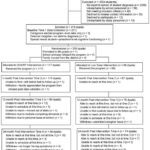Comparing things is a fundamental part of human communication. Whether discussing movies, job candidates, or vacation destinations, we constantly use comparative and superlative forms to highlight differences and preferences. But what exactly are comparatives and superlatives, and how do we use them correctly in English? This guide provides a detailed explanation with examples to help you master these essential grammatical concepts.
Understanding Comparatives
Comparative adjectives describe the difference between two things or people. We use them to indicate that one item possesses a quality to a greater or lesser degree than another.
Forming Comparatives
The formation of comparatives depends on the adjective’s length:
1. Short Adjectives (One Syllable or Two Syllables Ending in -y):
- Add “-er” to the end of the adjective.
- Example:
tallbecomestaller;happybecomeshappier
- Example:
- If the adjective ends in a consonant preceded by a vowel, double the final consonant before adding “-er.”
- Example:
bigbecomesbigger;thinbecomesthinner
- Example:
- If the adjective ends in “-y,” change the “y” to “i” before adding “-er.”
- Example:
easybecomeseasier;heavybecomesheavier
- Example:
2. Long Adjectives (Two or More Syllables):
- Use “more” before the adjective.
- Example:
expensivebecomesmore expensive;interestingbecomesmore interesting
- Example:
3. Irregular Comparatives: Some adjectives have unique comparative forms that don’t follow the regular rules.
goodbecomesbetterbadbecomesworsefarbecomesfartherorfurther(with slight differences in usage)funremains as is in formal contexts but often uses “more fun” informally
Using “Than” with Comparatives
Comparatives often use “than” to directly compare two items.
- Example: “This car is faster than that one.”
Sometimes, the comparison is implied, and “than” can be omitted.
- Example: “This route is quicker.” (Implying quicker than an alternative route)
Understanding Superlatives
Superlative adjectives describe the highest or lowest degree of a quality among three or more items. They identify one item as standing out from the rest.
Forming Superlatives
Similar to comparatives, superlative formation depends on the adjective’s length:
1. Short Adjectives:
- Add “-est” to the end of the adjective.
- Example:
tallbecomestallest;happybecomeshappiest
- Example:
- Follow the same rules for doubling consonants and changing “-y” to “i” as with comparatives.
- Example:
bigbecomesbiggest;easybecomeseasiest
- Example:
2. Long Adjectives:
- Use “the most” before the adjective.
- Example:
expensivebecomesthe most expensive;interestingbecomesthe most interesting
- Example:
3. Irregular Superlatives:
goodbecomesbestbadbecomesworstfarbecomesfarthestorfurthest(with slight differences in usage)funremains as is in formal contexts but often uses “the most fun” informally
Using “The” with Superlatives
Superlatives almost always use “the” before the adjective to emphasize that it’s the highest or lowest degree.
- Example: “She is the smartest student in the class.”
Using “As…As” for Equality
To express that two things are equal in a particular quality, use “as + adjective + as.”
- Example: “He is as tall as his brother.”
- To indicate inequality, use “not as + adjective + as.”
- Example: “This book is not as interesting as the last one.”
Conclusion
Mastering comparatives and superlatives is crucial for clear and nuanced communication in English. By understanding the rules for their formation and usage, you can effectively express comparisons and highlight differences between things and people. This guide provides a foundation for understanding these concepts. Continued practice and exposure to the English language will further solidify your understanding.
